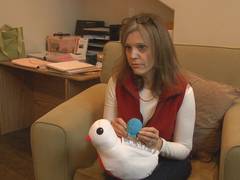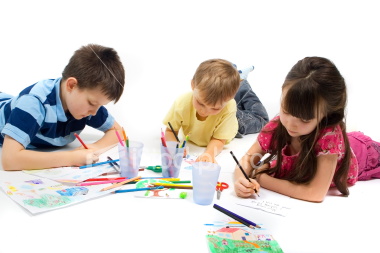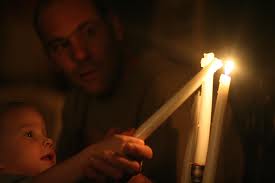 While we wrestle with a horror beyond the scope of any of us to fully comprehend, the reality for those of you spending time with children today – parents, teachers and care givers – is that you need words and ideas to help children process what we adults can barely wrap our own hearts and minds around.
While we wrestle with a horror beyond the scope of any of us to fully comprehend, the reality for those of you spending time with children today – parents, teachers and care givers – is that you need words and ideas to help children process what we adults can barely wrap our own hearts and minds around.
It is an opportunity to model for children that we heal when we share grief together. When we isolate and don’t discuss things, we people don’t do so well.
Here are some ideas that might help you.
Remember that children are very concrete. They need object lessons and actions beyond mere words to help them fully process tough things. We all experience our emotions – our feelings – in our bodies. Sometimes we adults don’t realize this, and we believe emotions are choices people can turn off or on. We can choose to use our minds to focus on a feeling – but feelings are already there – firing in the neurons – nerve cells in our brains and bodies. So remember that children experience and hold all their feelings in their bodies, too, and they need a way to literally – get them out.
If kids hold the feelings in their bodies, they are at risk for developing difficulties like anxiety and depression. This looks like fears, nightmares, freezing up, being stuck in sadness. If this goes on too long, children miss out on childhood. Adults are wired the same way, by the way. We all need to process emotions in healthy ways.
Adults – if you are traumatized by the shooting, please take care of your own emotions by sharing with other adults. Please limit your children’s exposure to your conversations, expressions of emotion and especially the media coverage of the shooting.
That said, once you feel you have a grip – it is very important to discuss the event with the children in your life, using age appropriate language. For children under 10, remember how black and white they are. Tell them that you are sad and feeling sorry for the people in Newtown and the parents, children and teachers at Sandy Hook school. Explain that someone who had a very sick brain got some guns and killed some adults and kids. This should never never happen.
For concrete lessons: You can show them on a map where the community is located. You also need to let them know that the shooter is dead now and that he can never harm anyone else, since small children will see him as the threat. It is important not to focus on political issues or the possibility of this happening again. These are problems too big for young minds, and would overwhelm many sensitive kids.
Children need to focus on two things. First, they need to get their own feelings out in tangible, concrete ways, and secondly, they need to take some action that is empowering for them to move forward.
To get feelings out, let them talk to you, asking questions or even crying while they talk. Help them get their feelings out through art, writing and drawing. Support all of their feelings. Teach them that emotions are temporary – they pass, and we won’t feel these bad feelings forever, but we will always be somewhat sad when we remember this time. Teach them that they can even feel more than one thing at the same time. In fact, it is really OK to take some time to focus on happy things – the here and now, what our school or family is doing today, how we are spending the holidays, etc. and to take time, also to share grief and sadness for others.
They need to place those hard feelings outside of their own bodies by putting them on paper or into a project. For those who are very sensitive, and may have nightmares, it is helpful to place the feelings or projects inside a box, drawer – or even sending them away through mailing them, releasing them to the sky – with a balloon or with bubbles, or with candles and prayers. (Kimochis is a toy especially designed to help children process feelings. Feelings are “held” in pockets on the Kimochi characters.)
Whatever your spiritual beliefs, it is time to show children how the spiritual part of us as human beings is stirred and even grows through loss and grief. You may teach your children some spiritual practices that may sustain them in the future – prayer, sharing a reading, lighting a candle. If you have no other tradition, most people agree that love is stronger than death, and this is a concept that you can impart to your children to give them hope. President Obama’s address from the prayer vigil in Newtown, CT last night contained a passage from 2-Corinthians 4:16-18, which may give you and your children some images to draw upon.
A recent research study indicates that the majority of people are soothed from giving and sharing. Stress is more dramatically reduced in a person who gives $5 to someone in need than it is in the person who uses $5 to buy themselves a treat. This is a great lesson to impart to kids at any time. Take this opportunity to empower children to take action which relieves their own distress and also benefits others. Consider donating toys to needy children in memory of the children who were slain. Making a card and sending it to Sandy Hook school or the town of Newtown would be very meaningful for many children. Making a charitable donation to fund research and services for mental illness is something that makes a lot of sense. Remember that each of these actions really matter – to both the givers and the recipients.
Some kids will fear that another shooter will come to their school. Help them think concretely about how unlikely this is. I call this “Doing the Math.” We can learn from the internet that there are about 90,000 K-12 schools in the U.S. For kids that are worrying about their own school being attacked, show them 90,000 items. Maybe highlight the number of schools in your community, and expand to the number of communities in your city, state and so on, so they can see the vast number of schools that are actually out there. You could represent this with countable objects like beans in a jar. Then, compare the number of schools which have been attacked with random violence each year. It is very very unlikely that any one school will be struck.
So, in summary – 1. Take care of your own feelings first; don’t over-expose kids. 2. Let them share openly whatever they are feeling and help them understand and process emotions. 3. Give them a way to put feelings “out” of their own bodies. 4. Facilitate giving to others, helping children identify themselves as “helpers” or “healers.” 5. Do the Math – for those who are anxious about the possibility of this happening in their school. Show in concrete ways how unlikely this is.

